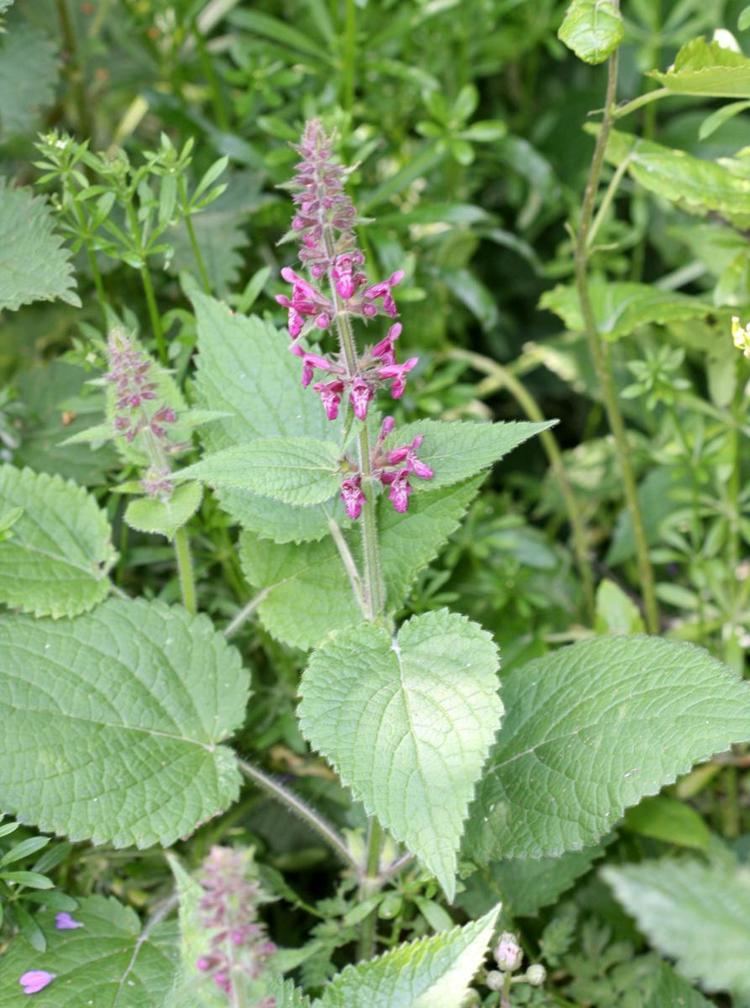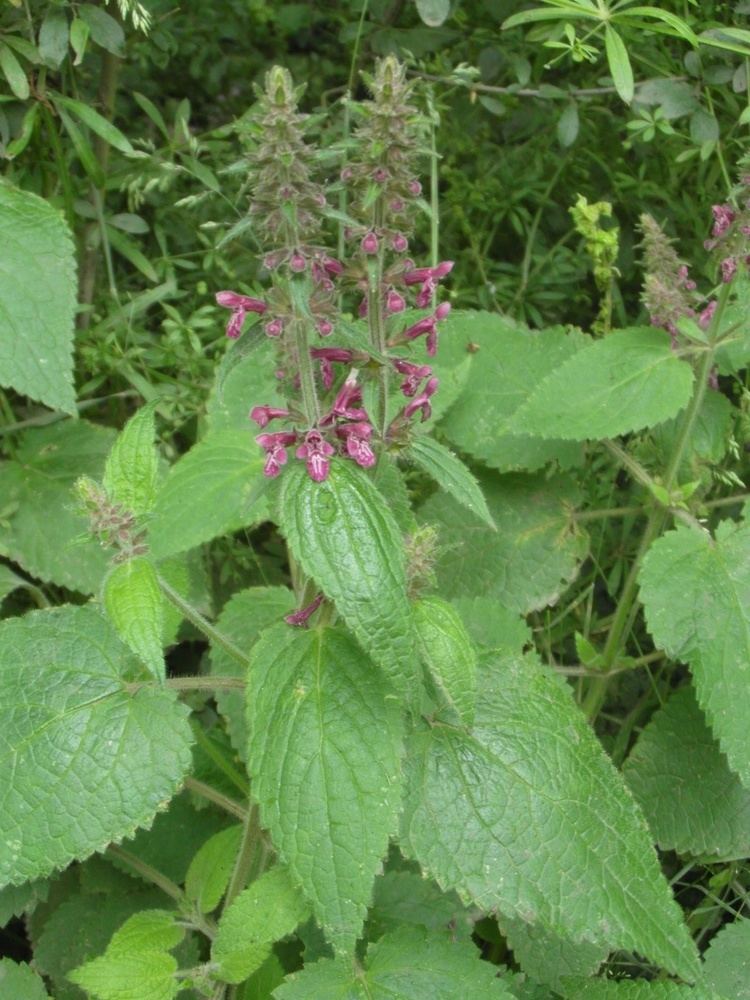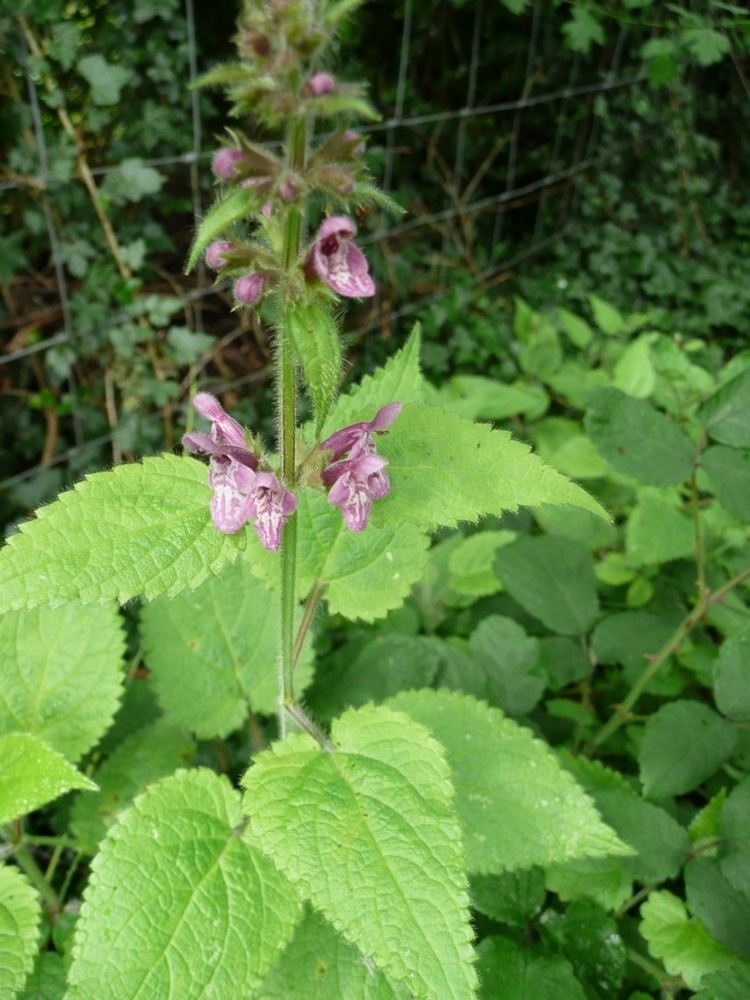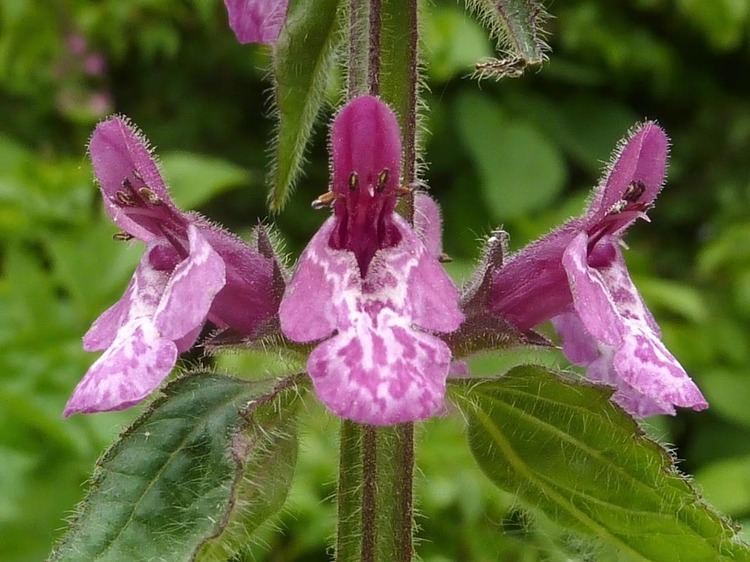Rank Species | Genus Stachys Higher classification Stachys | |
 | ||
Similar Stachys, Stachys palustris, Stachys recta, Circaea lutetiana, Stachys officinalis | ||
Hedge woundwort stachys sylvatica 2013 07 13
Stachys sylvatica, commonly known as hedge woundwort, whitespot, or sometimes as hedge nettle, is a perennial herb growing to 80 cm tall in woodland and unmanaged grassland. In temperate zones of the northern hemisphere it flowers in July and August. The flowers are purple. The leaves, when crushed or bruised, give off an unpleasant fetid smell.
Contents
- Hedge woundwort stachys sylvatica 2013 07 13
- Octonary ingredients of stachys sylvatica formulations pankaj oudhia s medicinal plant database
- Description
- Distribution and habitat
- Uses
- References

Octonary ingredients of stachys sylvatica formulations pankaj oudhia s medicinal plant database
Description

Hedge woundwort is an erect perennial plant with slender underground runners and grows to a height of about 30 to 100 cm (12 to 39 in). The stem branches occasionally and is squarish and hairy, with glandular hairs on the upper part of the plant. The nodes are widely spaced and the mid-green, stalked leaves are in opposite pairs. The leaf blades are hairy, have a cordate base and are ovate with a blunt tip and with regular large teeth on the margin. The inflorescence forms a dense terminal spike and is composed of dense whorls of purple flowers with white markings. The calyx has five lobes and the corolla forms a two-lipped flower about 12 to 18 mm (0.47 to 0.71 in) long with a fused tube. The upper lip of each flower is convex with dense, glandular hairs and the lower lip is three-lobed, the central lobe being the largest. There are four stamens, two long and two short, the gynoecium has two fused carpels and the fruit is a four-chambered schizocarp. The plant has a slightly unpleasant smell.
Distribution and habitat

Hedge woundwort is native to Europe and central and western Asia. It grows in dappled shade at the edge of woods, in hedgerows and on rough ground.
Uses

Hedge woundwort is popular with bees. Along with its close relative marsh woundwort, it is used to promote healing of wounds. The famous 17th century herbalist John Gerard was very impressed with its powers and used it extensively.


